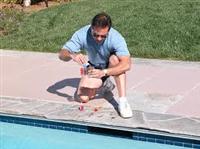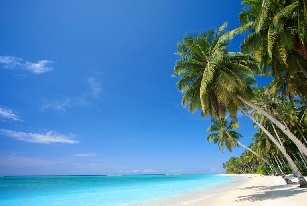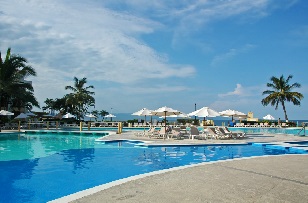RWIs may be caused by infections carried into the water by bathers, or certain chemicals that build up in the water. Types of infections include gastrointestinal, dermal and respiratory. Key factors include the concentration of the disinfectant, the chemical form of the chlorine or bromine, pH and time. Here are some water chemistry basics that you need to know.
Disinfection occurs when a disinfecting agent in the water oxidizes vital components in germs and kills them before they can contact and infect bathers. This takes seconds for bacteria and only a few minutes for others. The only infectious RWI not easily controlled by chlorine is cryptosporidium. Outbreaks from all the other germs (E.coli, shigella, norovirus, giardia, Legionella and pseudomonas) would completely stop if we diligently maintained the free chlorine at 1 ppm or more.
While chlorine is the disinfectant used in nearly all facilities, some opt for bromine. Regardless of the type used (stabilized, unstabilized or salt generator) once dissolved, chlorine is chlorine. When chlorine reacts with organic material, including germs, it may form salt or chloramines. Also called disinfection byproducts, chloramines cause rashes, eye irritations and respiratory complaints.
Testing makes certain there is enough free chlorine to kill the germs and not too much chloramines. Optimal free chlorine should be to 2.0 to 4.0 ppm, and there should be no chloramines. The practical limit for chloramines varies, but up to 0.2 ppm is acceptable for most facilities. If you can smell the pool or get eye or skin complaints, chloramines are to blame. Facilities must test free and combined chlorine at least three times per day, more if local codes require it. Even facilities with automatic controls still must test manually at least once per day.
Balancing the water protects the financial investment in the facility. Water balance factors are pH, alkalinity, hardness, temperature and total dissolved solids (TDS).
A critical factor in water balance and disinfection is pH, which is the amount of acid in the water. The preferred pH range is 7.2 to 7.8. This keeps the chlorine active and is the most comfortable for bathers. Check the pH at least once per day.
Alkalinity is the buffer that stops swings in pH. Alkalinity is the amount of bicarbonate (baking soda) dissolved in the water. Optimal alkalinity is 80 to 120 ppm. Check alkalinity at least once per week or when make-up water is added.
Hardness is the amount of calcium dissolved in the water. Too little and the plaster and metal components are eaten away; too much and the surfaces get scales. Optimal hardness for pools is 200 to 400 ppm. Check hardness at least once per month, or when makeup water is added.
For an aquatics facility to run safely, an operator has to juggle all the factors and keep all the parts in the air at the same time.
To determine whether the water is balanced, measure each factor separately and then plug the numbers into an equation. Allowing the disinfectant level to drop, even in periods when the facility is idle, is just like juggling that 12-inch butcher knife with your eyes closed. Let the water balance slip and that bowling ball can break your foot. The best place to learn to juggle your water quality is in an accredited class. Friends in the industry and seminars at shows can help you polish basic skills. They may even help you learn how to add flaming batons into the mix!






